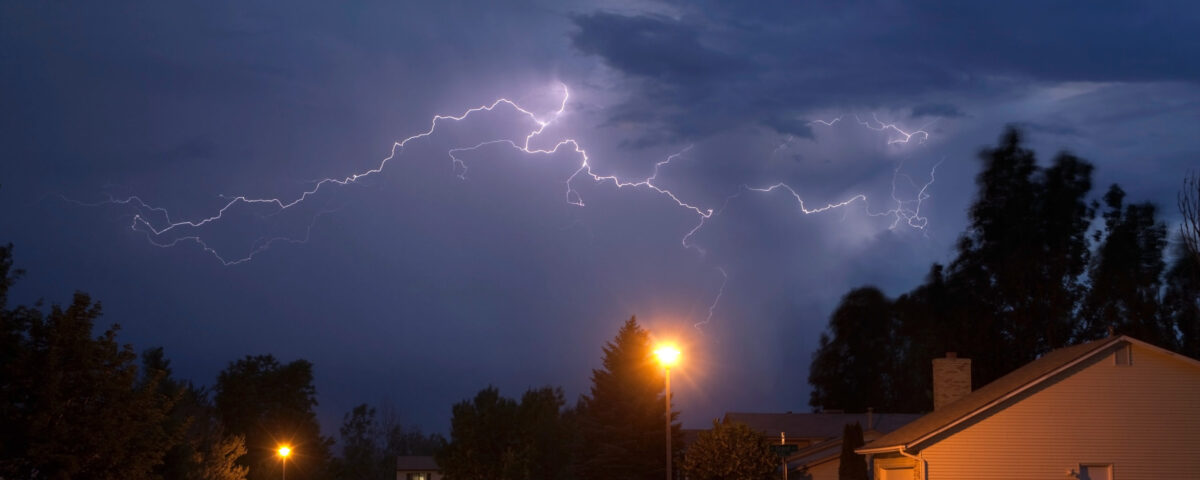
Summertime in northern Colorado is a great time to get out and explore the beauty that nature has to offer. From mountainous trails overlooking scenic views to serene waters perfect for an afternoon fishing trip, northern Colorado has plenty to offer for outdoor getaways. But with the warmer weather comes heavy thunderstorms, and with those come hail, high winds, and severe lightning. Whether you’re indoors or outdoors, it’s important to know proper safety etiquette when lightning starts to strike. Check out these lightning safety tips below, and for more storm safety resources, check out our storm safety page.
The best way to stay safe when a storm rolls through is to actively avoid it. Storms have some telltale signs they’re on their way: rumblings of thunder, darkening skies, streaks of lightning through clouds, or increasing winds. If you start to notice signs of a storm, especially if you start to hear thunder, head inside! Local news or weather forecast websites can be a great resource to determine the severity and duration of storm conditions. A good rule of thumb is that you want to wait roughly 30 minutes after the last thunderclap before heading back outside.
Even when we prepare for a bright sunny day enjoying the great outdoors, the weather can change swiftly, and there isn’t always a good way to get back indoors. While your best bet is to find a safe, enclosed shelter, even if it’s a fully enclosed vehicle, a large enclosed bathroom, or another safe shelter that has four walls and a roof, these aren’t always available.
If you find yourself hiking in the mountains, the following may be able to reduce your chances of being struck by lightning:
Those who find themselves hiking in groups should spread out while still staying within seeing distance of each other. You want to be far enough to avoid multiple people being injured by one lightning strike but close enough to help if someone is injured.
If you’re boating or fishing, immediately head to shore. While boats with cabins can provide some safety, it’s better to find a larger enclosed structure on land to shelter in. If you’re caught out in a smaller boat with no cover, drop the anchor and get as low as possible.
Just because you’re inside during a thunderstorm doesn’t mean you’re entirely safe from lightning. Even indoors, lightning can pass through metal in concrete, plumbing, and electrical equipment. While the likelihood of being hurt by lightning while inside is much lower than when outdoors, it’s best to still follow safe practices while indoors. These include the following: